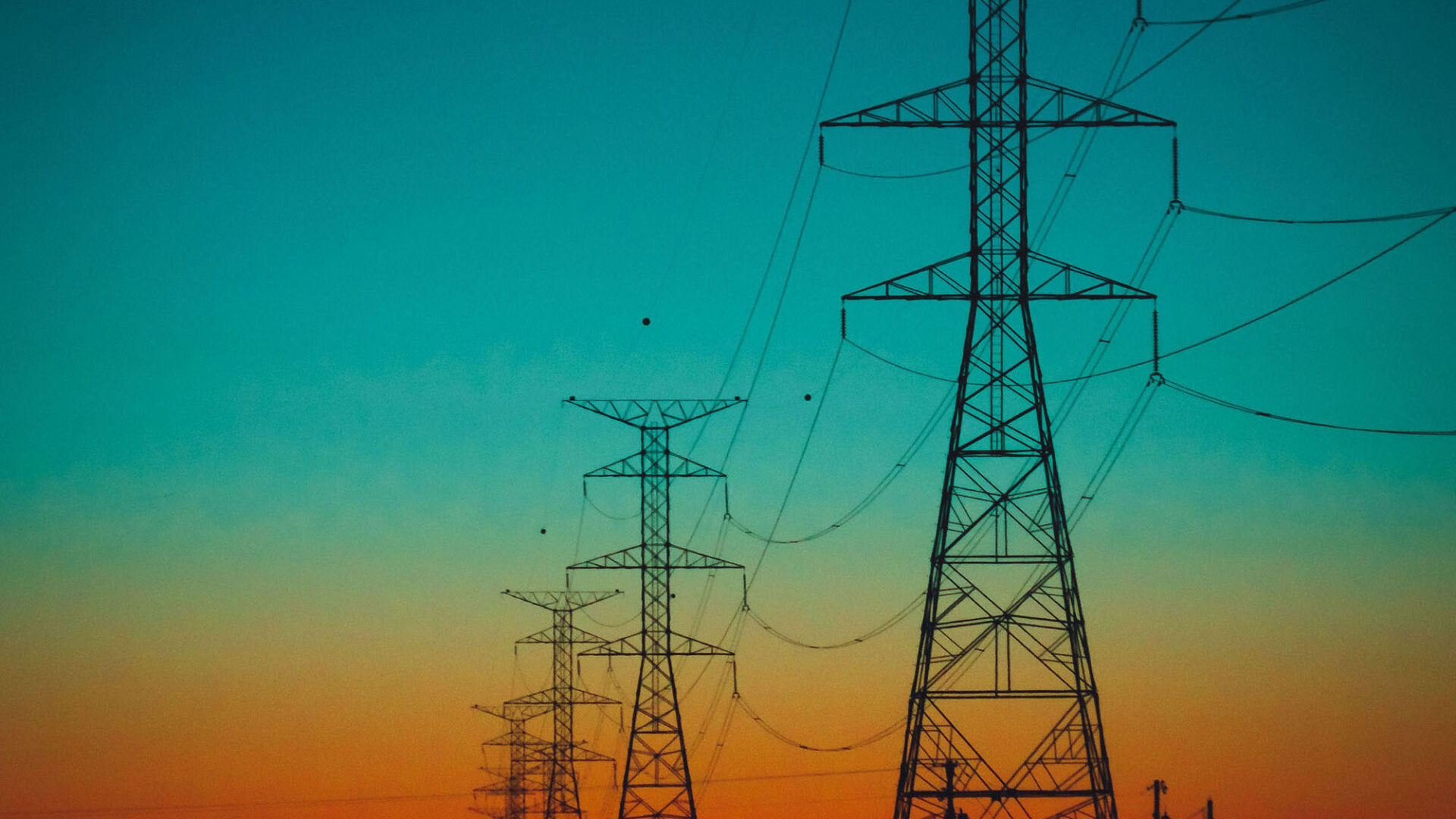
Mindgrub & Agent511
Building a cohesive mobile experience for utility customers
Introduction
Over the past decade, the ways brands interact with customers have changed dramatically. Today, customer expectations are set by brands like Google, Amazon, Twitter, and Apple, and as a result, they’ve come to expect personalized, targeted, and timely messaging from businesses – particularly on their smartphones.
Even utilities and public sector agencies are subject to these competitive threats. Political forces, regulatory challenges, and the emergence of prosumer energy services are forcing power and utility companies to find ways to deliver personalized mobile experiences for their customers.
Partners in utility customer experience
Mindgrub, a full-service digital agency and consultancy specializing in custom mobile, web, and marketing solutions, and AGENT511, a multi-channel communication platform, have created a comprehensive approach to driving customer engagement through mobile communication channels. The mobile experience detailed in this paper combines a number of foundational components, such as a rich custom mobile app experience, a preference management center, and timely, personalized notifications.
As utilities transform their businesses from poles and wires to energy service providers responsible for distributed energy resources (DER) and electric vehicles (EV), they can use this framework to offer customers a premier experience that exudes confidence and expertise.
Mobile customer engagement
How does engaging your customers on their mobile phones help improve operational efficiency, increase customer satisfaction, drive profitable growth, and mitigate business risk?
Older business models in the utility space relied upon engaging with a customer infrequently, perhaps sending someone a bill once a month or speaking with someone on the phone during a rare outage event. This approach reflected the tools available at the time – smartphones have only reached ubiquity in the last few years.
The proliferation of smartphones, wearables, and cloud technology (combined with growing demand for frictionless interactions) has presented organizations with numerous ways to connect with customers digitally. In fact, with the abundance of information available today, espousing transparency in your communications with customers is vital to engender and maintain long-term trust.
Each time a customer interacts with you is an opportunity to move the needle toward achieving your objectives.
When you send your customer a reminder of an upcoming appointment and offer the ability to instantly reschedule, you build customer satisfaction. When a customer signs up for mobile app billing notification, not only do you save print fulfillment costs, but your notification drives them instantly to a call to action within the app itself. When a customer uses a self-serve option to report a service disruption rather than calling your call center, you have the opportunity to realign duties for the contact center staff. These individual changes in customer behavior add up and incrementally enhance your bottom line over time.

Mobile customer engagement
Amount by which customer service exceeds energy price in terms of overall contribution to customer satisfaction (behind only reliability)
Source: JD Power1
Other ways that customer satisfaction drives return on investment:
- Self-service options alleviate contact center congestion, thereby giving support staff more time to serve as an energy concierge
- Personalized billing reminders and mobile payment options reduce the number of costly disconnections
- Notifications and mobile energy dashboards promote energy efficiency during peak times
- Mobile messaging encourages participation in new managed services such as EV charging and DERs2
- Ad hoc emergency communications across multiple channels save lives and reduce liability risk. The COVID-19 pandemic and associated disruption has underscored the need to maintain customer communications around usage and billing
1JD Power, How Customer Satisfaction Drives Return On Equity (ROE) for Regulated Utilities, October 1, 2015, https://www.jdpower.com/business/resources/how-customer-satisfaction-drives-roe-regulated-utilities
2 Jay Malin, Drive customer engagement with DER, Energy Central, October 29, 2020, https://energycentral.com/c/iu/drive-customer-engagement-der
Simplified preference management
While it’s useful to document the numerous individual user stories associated with your customer experience, it can be challenging to deliver the level of personalization customers expect at scale. That’s where preference management comes in.
“Preference Management” systems allow customers to select the type, cadence, and timing of messages they receive, customize the information they have access to, and configure the way in which they access that information. Sample preferences include desired channels of communication, messaging campaigns of interest, language preferences, and time of day filters (including quiet hours when notifications are turned off).
The platform outlined in Figure 1 consolidates and synchronizes information from a variety of systems of record to deliver branded, relevant, and timely customer touchpoints across multiple channels.
One example of how the integrated system works together is during an outage. When a utility’s monitoring system detects an outage, the preference center serves as a middle layer, using messaging templates and business logic to deliver a consistent experience across several communications channels (mobile application, SMS, email, etc.).
Utility administrators can update and control this experience from one universal dashboard in order to adjust to changing business or weather conditions. Customers can also change their own communications preferences and start/stop participation in programs like peak savings days and payment plans. Usage updates, for example, or subtle nudge alerts about energy usage over time have been proven to help impact usage behaviors (and, therefore, improve profitability).

Agile technical approach
The fast pace of innovation in mobile and social media and the relative symmetry in functionality between web and mobile means that IT investments are at risk of depreciating quickly. Taking an agile approach to the digital experience optimization process helps utilities innovate quickly while delivering measurably better experiences for their customers over time.
Agile development is rooted in a deep understanding of where customer needs and business needs intersect. As a result, developing a consolidated customer engagement platform that incorporates mobile application development, preference management, and notifications involves ongoing research, testing, and analysis.
Having a single integration layer for all communications channels increases agility by eliminating the complexities associated with deploying new programs as shown in Figures 2 and 3. For example, a utility can quickly and easily add Apple Business Chat or Facebook Messenger as a communications channel within the applications themselves, thereby allowing the utility to test often, fail fast, and improve.
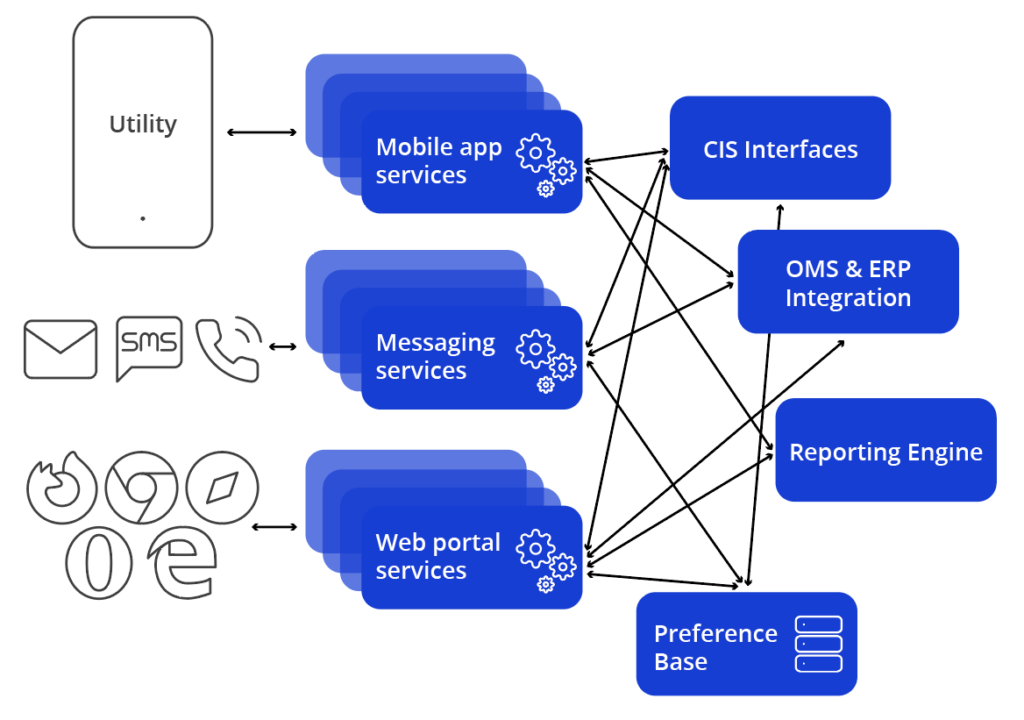
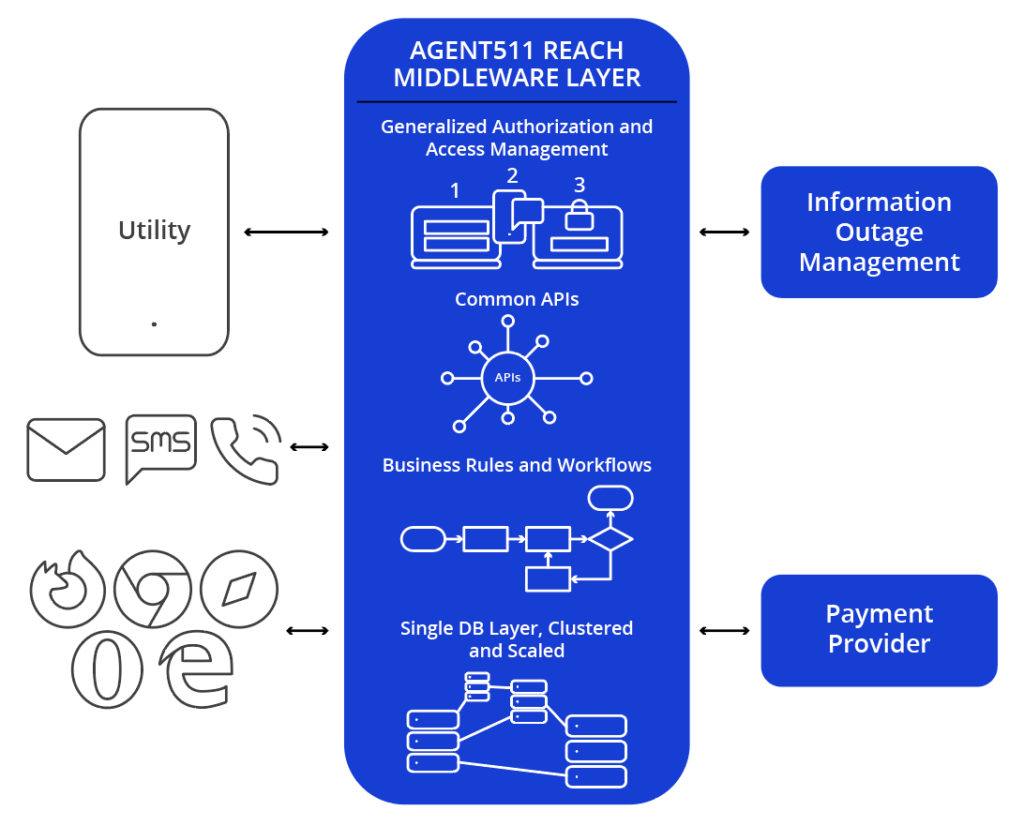
Implementing a comprehensive modular framework that incorporates a mobile application and new communications channels offers numerous advantages:
- Efficient, secure integration that avoids duplicity in interfaces across channels and programs as shown in Figure 4
- Easier to upgrade utility infrastructure and interfaces by consolidating upstream service providers as shown in Figure 5
- Extensible modular architecture and experiential APIs encourage innovation around new channels and capabilities
- Consolidated data retention and analytics as well as branding and templates
- Centralized customer preferences, information, and regulatory enforcement (i.e. adherence to the Consumer Protection Act and Do Not Call lists)
- Shorter time to market on implementing new features and capabilities


Programs & integration
The consolidated platform abstracts the integration complexity between the mobile app and notification channels and utility backend information systems, including:
- Customer information systems (CIS)
- Outage management systems
- Billing & payment
- systems
- Demand response
- Load curtailment
- Low-income
- Analytics & MDM
- Call telephony
The purpose of the common integration framework is to avoid duplicitous integration and strategically reinforce brand consistency across multiple channels. Most interfaces leverage modern frameworks such as webhooks and JSON, and some legacy asynchronous interfaces which collect large data sets such as usage history remain batch. All channels are encrypted in transit and use global load balancing to maximize redundancy. The Usage Graph API, for example, provides an extract of historical data in graphical form so as to eliminate complex, data-intensive integrations.
Table 1: list of program APIs absorbed in the integration layer
| API Name | Fields | Purpose |
|---|---|---|
| Bill History | Bills by date, line items, PDF location, status | Maintained by platform to display on mobile app |
| Usage API | Meter usage by date/time increment | Maintained by platform to display on mobile app |
| Usage Graph | Graph of usage by date/time | Available to mobile app and responsive sites to show usage |
| Work Order History | Work Orders by date, request type, status | Maintained by platform to display on mobile app |
| Create Service Request | Request type, requestor, flexible fields | Invoked by channel to create a request such as start, stop, streetlight, meter service |
| Preferences | Accounts, contacts, preferred programs, program preferences, customer information | Bidirectional exchange and update of preferences and update program participation |
| Bill Balance | Account, balance, due date | Requested by channel to acquire billing details |
| Payment History | Payment by date, amount, bill | Available to mobile app to display payment history |
| Pay Bill | Account/Customer, amount, method, bill | Invoked by channel to payment vendor |
| Outage Report | Account, flexible fields | Invoked by channel to report outage to OMS |
| Outage Status | Status, ERT/restoration, template | Invoked by channel to acquire current outage status |
| Messaging | Messages sent by date/time, channel, delivery status | Maintained by platform to display on mobile app |
Results of a mobile-first strategy
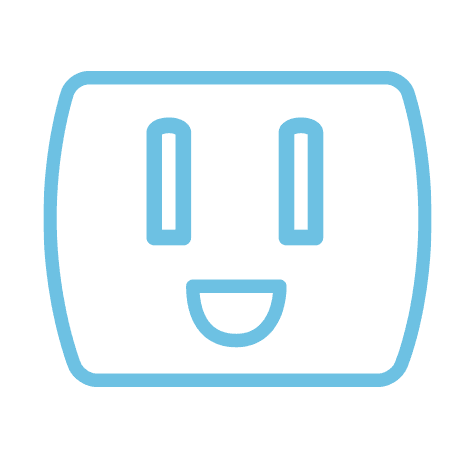
“Power outages are going to happen. The more proactive electric utilities are in clearly communicating information about the cause, anticipated duration, and repair of an outage, the more satisfied their customers will be with their overall service.”3
Separately, Power Grid International prominently featured ComEd’s Twitter outage reporting and their new mobile application as primary reasons for their rise in J.D. Power customer satisfaction scores.4
3 JD Power, Residential Electric Utility Customer Satisfaction Increases for Seventh Consecutive Year, Driven by Proactive Communication, J.D. Power Finds , July 11, 2018, https://www.jdpower.com/business/press-releases/2018-electric-utility-residential-customer-satisfaction-study
4 PowerGrid International, VIDEO: Service lets ComEd customers report power outages on Twitter, September 9, 2018, https://www.power-grid.com/2016/09/09/service-lets-comed-customers-report-power-outages-on-twitter/#gref
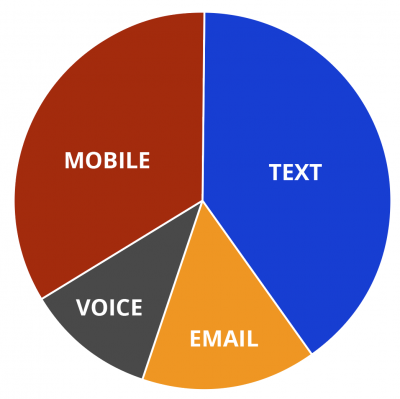
5 Chartwell Webinar with BGE, August 27, 2020, proprietary data source.
Industry research indicates that consumers increasingly prefer push notifications to other communications channels such as IVR and email.
Push notifications are highly effective at keeping customers informed – they’re prominently featured on mobile home screens until dismissed, and, when clicked, lead customers to additional engagement within the mobile application.
In addition to communications triggered by external systems such as OMS and billing platforms, system administrators can initiate personalized, ad hoc emergent messages through the consolidated platform, thereby keeping customers instantly informed. These types of solutions are being leveraged to notify and inform customers facing hardship during the pandemic.
By strategically promoting their mobile app and SMS outage reporting channels, BGE saw digital outage reports outpace phone calls for the first year in a row – a 30% increase from 2019-2020 alone.
This transformation reduces call volumes, improves customer satisfaction, and frees up agency capacity.
Data-driven improvement
By collecting complete mobile analytics, utilities are able to evaluate and improve each step in the customer journey. For instance, take the example of a customer calling into the IVR to pay a late bill, receiving a text confirmation of payment, and entering the app to verify the balance is settled.
Connecting each touchpoint within a single data warehouse is the evidence utilities need to demonstrate a successful customer experience.
In addition to experiences like the one we just described, we can also use analytics to identify customers who continually refresh the mobile app for outage status and address their pain point through proactive updates of estimated restoration time.
- How many customers report outages after receiving a restoration message
- How many customers received a long restoration time and requested status via mobile app multiple times
- How many customers received an estimated restoration message but did not report a resolution
- How many customers opt out after receiving an outage but continue to check the mobile app
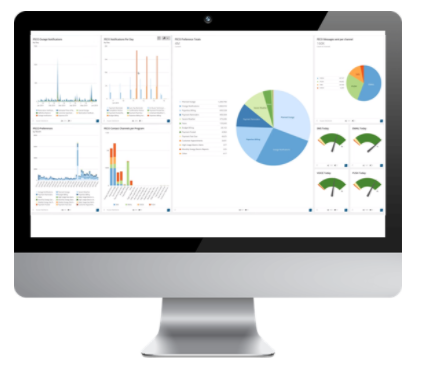
Summary
Custom-built mobile applications and timely, relevant notifications are two powerful ways to deliver a premier experience to utility customers. While building an integrated customer engagement system does require time, research, and ongoing analysis, agile software development paired with a flexible middleware platform increases production efficiency and facilitates ongoing innovation.
Combining push notifications with an interactive mobile application experience instantly drives customers to take actions such as bill payment, outage confirmation, and management of home energy usage. This solution can help utilities realize the full benefit of common integration paradigms and data models that drive better customer experiences and value across the utility.
AGENT511 and Mindgrub offer an extensible, reliable, and secure approach that can scale across new channels and programs, thereby allowing utilities to maximize customer engagement. Even as disruptors enter the market, dedication to customer experience and investment in innovation can position utilities competitively for generations to come.
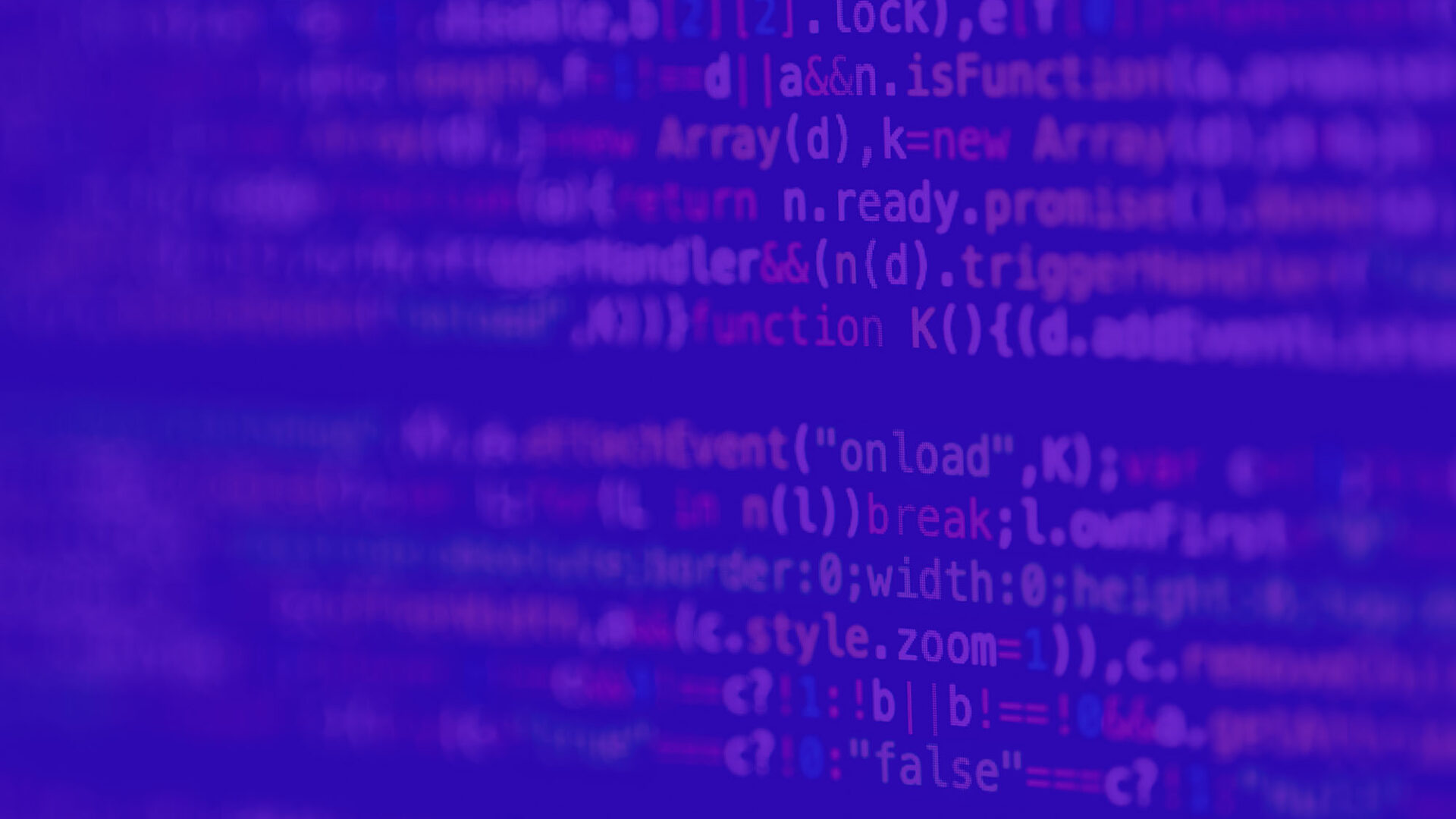
About AGENT511
AGENT511 deployed its REACHTM text outage alerts platform in 2009 at ComEd, a major electric utility serving Northern Illinois to send timely, personalized outage restoration alerts. The platform incorporated complex rules and filters, programmable templates, and integration with customer information systems. Since then not only has the platform undergone major expansions that included adding programs and channels such as a mobile app and social media, but now it also delivers communications for industries such as healthcare, local government agencies, and water and gas utilities. The REACH platform now covers millions of users and hundreds of organizations across North America.
AGENT511 helps organizations to develop and build upon its customer engagement strategies by delivering timely, relevant multichannel communications. Its team works with yours to identify important customer journeys and helps to fulfill your objectives for successful digital customer engagement. We differentiate ourselves by participating in the entire project lifecycle by providing expert onboarding and support. Our team is continually innovating and bringing leading-edge solutions to market. We take pride in delivering quality, on-time and on-budget services.
About Mindgrub
Mindgrub Technologies is an award-winning agency and consultancy that specializes in agile mobile and web development, enterprise application support, DevOps, digital marketing, branding, user experience design, quality assurance testing, and emerging technologies.
Mindgrub’s mission is to create technology that people want to use – technology that makes lives better, jobs easier, and helps businesses thrive. Since 2002, Mindgrub has led digital transformations for a diverse group of Fortune 100 corporations, utilities, universities, healthcare organizations, and public sector agencies, including Exelon, NASA, Wendy’s, Entergy, and The Smithsonian.
A member of the Inc. 5000 for multiple years running, Mindgrub is headquartered in Baltimore, Maryland with offices in New York City, Philadelphia, and Washington, D.C.
Copyright © 2020, Good Egg Media LLC DBA AGENT511 and Mindgrub
Northbrook, Illinois, and Baltimore, Maryland USA. All rights reserved. This document is the property of AGENT511 and Mindgrub. It contains material distributed under license agreement. Reproduction or use other than as provided for in the license agreement is prohibited.
Information contained herein consists of AGENT511 and Mindgrub copyrighted material and, as indicated, copyrighted material furnished by third party suppliers, which is used herein by permission of said suppliers.
Published by AGENT511, 425 Huehl Road, Suite 11B, Northbrook, Illinois 60062 and Mindgrub, 1215 East Fort Avenue, Suite 200, Baltimore, MD 21230.

